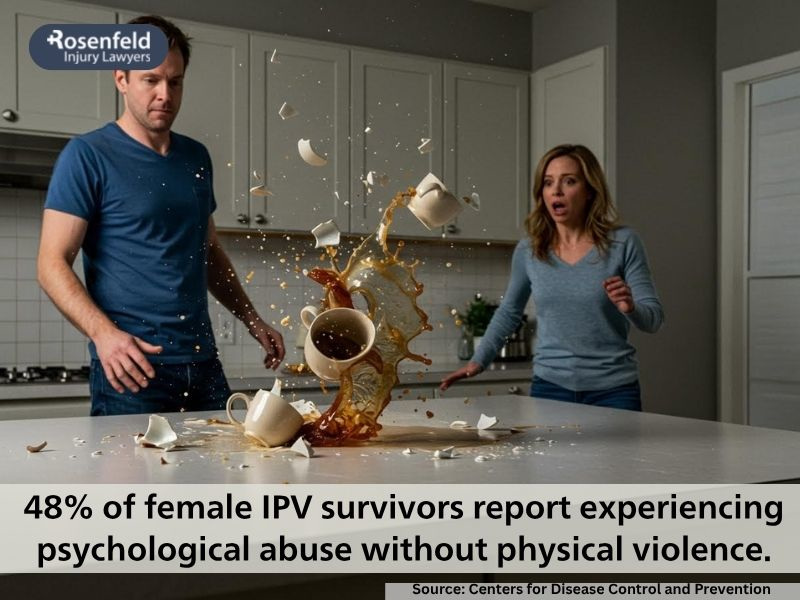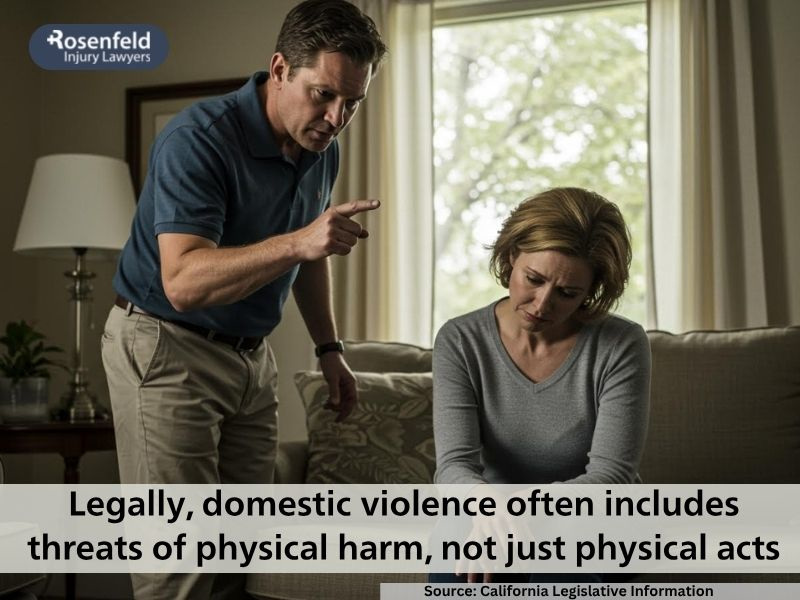- Free Case Evaluation 866-757-6452 Tap Here To Call Us
What Is the Difference Between Violence and Abuse?
Mistreatment of any kind can have a lasting impact on a victim. Often, the people we trust the most are the ones who perpetrate this behavior against us. Violence and abuse are two terms that are frequently used interchangeably to describe misconduct, but they are not the same in a legal or therapeutic sense. What is the difference between violence and abuse?
In this guide, we will discuss the differentiators and how they affect your legal options.
At Injury Lawyer Team, we understand the devastation that can result from a person or entity committing violence or abuse against an individual. Our attorneys will listen to your story and stand by your side as you fight for fair compensation. Both abuse and violence can have a lasting impact on the victim and must be taken seriously.
What Constitutes Violence?
Violence is an impactful behavior that can occur inside and outside of relationships. It involves the use of physical force or coercion to inflict harm, injury, or intimidation. Violence can come from a close family member, a friend, a caretaker, or even a stranger.
Let’s look at the different forms of violence that another person could commit against you.
Physical Violence
Physical violence is any type of physical harm or a threat of harm against an individual. Some examples of physical violence include hitting, choking, kicking, hair-pulling, using weapons, destroying property, or making physical threats.
The impact of a physical act may involve injuries, but it can also lead to psychological trauma. If the behavior is ongoing in the context of an intimate relationship, the survivor is more likely to live with emotional distress for a long time.

Sexual Violence
Any physical or threatening act that is sexual in nature may constitute sexual violence. These sexual acts can include unwanted sexual contact, coercion, rape, sexual assault, or harassment.
Many of these behaviors could also be categorized as abuse. For example, an ongoing pattern of harassment would probably be classified as sexual abuse, especially if it is used to dictate the victim’s actions and cause harm on the abuser’s terms.
Domestic Violence
Domestic violence is a very common concern because it is often committed against vulnerable individuals by authoritative adults. This violence occurs within the context of intimate or family relationships, such as spouses, siblings, or dating partners.
In many cases, domestic violence is one form of a broader pattern of domestic abuse. Intimate partner violence can be used to control one person and intimidate them into remaining silent about the physical mistreatment.
Non-Physical Violence
Although we typically think of violence as physical force, this is not always the case. Threats of violence and bullying are also tactics that an abusive partner or adult can use to assert control over another person.
For example, if one person threatens to beat up a child if they reveal the misconduct to another party, this is considered violent behavior even though it is not physical.
What Constitutes Abuse?
Abusive behavior can overlap with violent behavior, but it has a distinct definition. Abuse typically involves a pattern of harmful, controlling, or exploitative behavior. Some of the forms of abuse include emotional, psychological, domestic, verbal, sexual, financial, and physical.
Let’s look at these examples in greater detail.
Domestic Abuse
Similar to domestic violence, domestic abuse occurs within the setting of an intimate or family relationship. It can include verbal, psychological, financial, and physical abuse.
While violence may be part of the equation, many forms of domestic abuse are non-violent, such as lying about finances, undermining someone’s self-esteem. Intimate partner misconduct and family violence may have a long-term effect that goes far beyond the physical consequences, making it difficult for them to trust again.
Emotional and Psychological Abuse
Psychological abuse can occur in professional, healthcare, educational, and domestic settings. Examples of psychological abuse may include gaslighting, isolation, manipulation, humiliation, and threats. The abusive individual often uses it to maintain control over another.
Financial Abuse
Taking advantage of another person’s finances is another form of abuse that often receives less attention in the public sphere. It can include stealing possessions, controlling access to money, or coercing someone into financial decisions.
For example, financial abuse is common in nursing homes, where nursing staff may attempt to steal money from residents or make changes to the financial documents of vulnerable patients.
Sexual Abuse
If the pattern of mistreatment is sexual in nature, the abuse falls into this category. Sex abuse, especially involving children, can be devastating for their long-term well-being. Behaviors like assault, sex violence, rape, harassment, exposure to pornographic material, exploitation, or inappropriate comments.
What Are the Key Differences Between Violence and Abuse?
Although violence and abuse are often discussed hand-in-hand, there are important differences. Violence is often a part of abuse, but not all violence is abuse, and not all abuse is violent.
Abuse is all about power and may or may not include force. Violence is the use or threat of force that may or may not be part of an abusive pattern.

What Legal Options Do Victims Have?
If you have suffered from violence or abuse, whether it was in the context of a close relationship or during an interaction with a stranger, you may have legal options to address the act and hold the at-fault party accountable.
Family Law
Family law is a crucial field that can play a role in domestic issues. Family court recognizes both violence and abuse and can help survivors seek safety through various methods.
Utilizing family legal options can be helpful in the following circumstances:
- Obtaining a restraining order against an abusive ex
- Filing for divorce after a history of mistreatment
- Determining custody to protect children from dangerous parents or guardians
Civil Law
Violence or abuse may cause legal damages to the victim of the act. It can lead to bodily injuries, emotional trauma, and financial consequences. In these scenarios, you can file a personal injury claim to recover certain legal damages, including:
- Lost wages from missed time at work during recovery]
- Medical expenses, such as emergency care, surgery, medication, and therapy
- Emotional distress, including PTSD, anxiety, and depression
- Pain and suffering from bodily injuries
- Loss of enjoyment of life
Statute of Limitations
Every state has a statute of limitations that establishes deadlines for pursuing civil lawsuits. Some limits for abuse or violence have been abolished completely, while others could be as little as two years. Exceptions may also apply if you file a civil lawsuit on behalf of a minor. For example, there is typically more flexibility for sexual abuse lawsuits due to the impact of such circumstances.
Contact Injury Lawyer Team Today
Our attorneys work on a contingency fee basis, which means you pay nothing unless we win. By leveraging our experience and resources, you will have a better chance of securing compensation.
Contact us today at 866-757-6452 to schedule a free consultation with top-rated lawyers.








